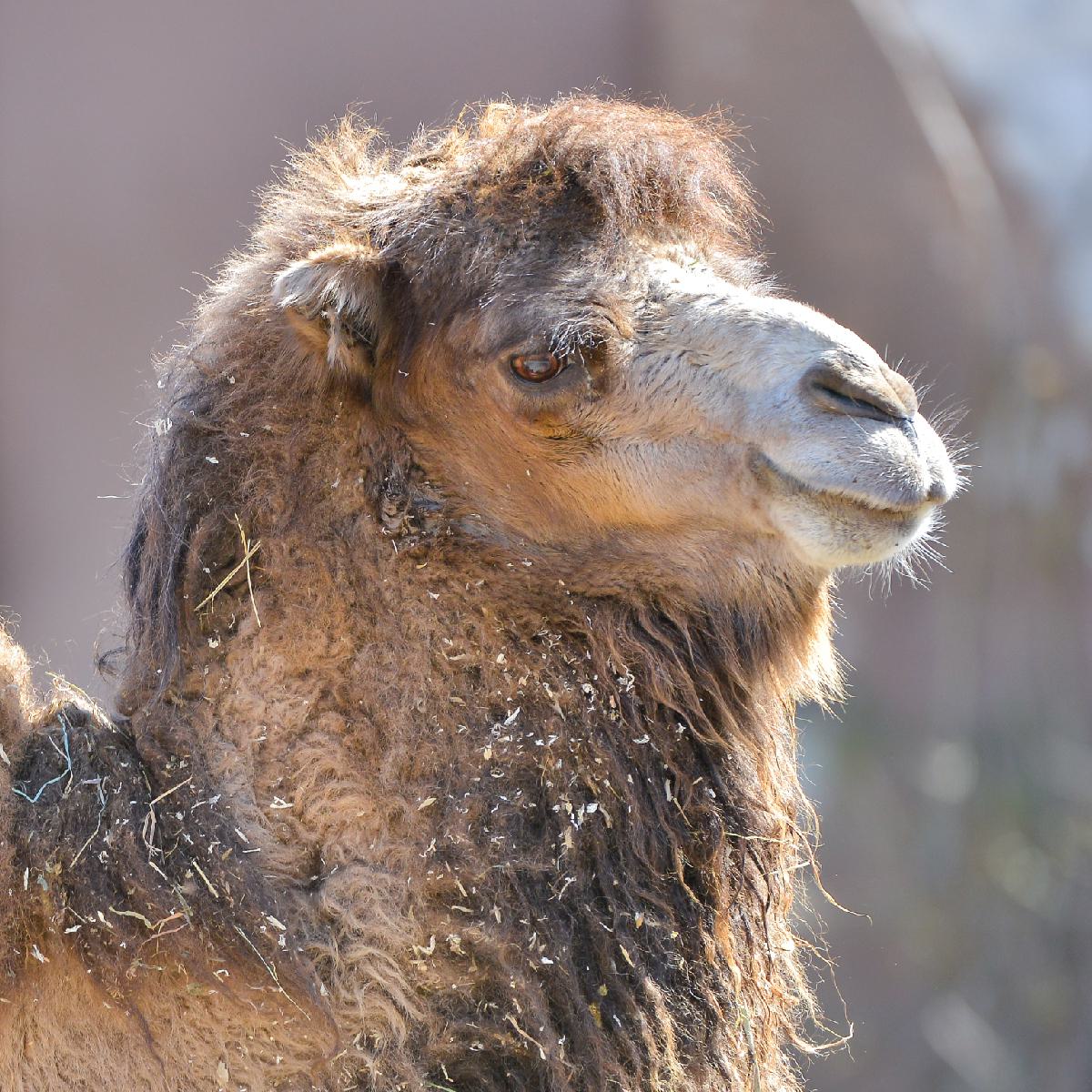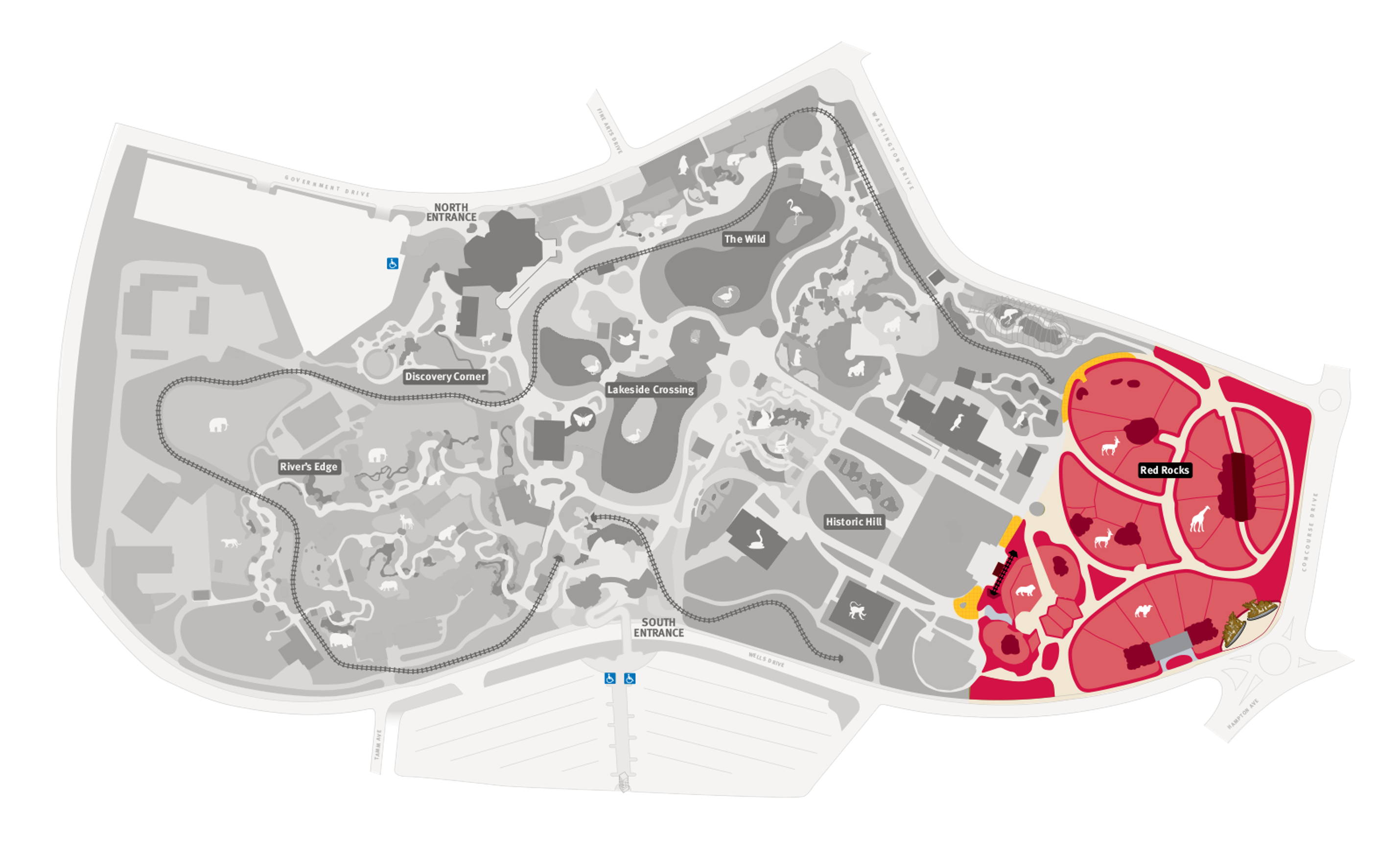
Bactrian Camel
Camelus bactrianus
Did you know?
- The Bactrian camel is part of the Camelidae family, which they share with llamas and alpacas.
- Wild Bactrian camels live in deserts and grasslands in Mongolia.
- They can drink up to 35 gallons of water at a time.
- They are able to eat and digest thorns without harm.
- After an 11-month pregnancy, a female camel will have one baby.
Adaptations
Bactrian camels’ central Asia habitat is in and around the Gobi Desert, which has a range of temperatures, from sweltering heat to freezing cold. Camels have a number of adaptations to help them thrive in this extreme environment. They have long, shaggy fur that keeps them warm but which they can shed during hot months. Their wide hooves keep them from sinking in sand. The energy-rich fat stored in their humps enables them to survive long periods without food. They are able to hold 35 gallons of water at a time, so they can take advantage of water supplies when they have them. They also have long eyelashes and a third eyelid, which help keep dirt and sand out of their eyes.
Two humps
Bactrian camels differ from their warm-desert counterparts, the dromedary camel, in one obvious way: their humps! Bactrian camels have two humps (like a capitol ‘B’) and dromedary camels have one hump (like a capitol ‘D’). Humps store energy in the form of fat. When necessary, a camel will use this for energy instead of eating. Wild Bactrian camels are the only camels that still exist in the wild, though there are not many left and most Bactrian camels are domesticated.
Threat Level
- Unknown
- Common
- Near Threatened
- Threatened
- Endangered
- Critically Endangered
- Extinct in the Wild
Critically Endangered
The Bactrian Camel faces an extremely high risk of extinction in the wild.
Range
Mongolia (in Central Asia)
Habitat
Deserts and grasslands

We care about the bactrian camel
Although domesticated Bactrian camels are numbered in the millions, there are less than 1,000 wild camels left in their native range in Mongolia. The Zoo supports Bactrian camels at Red Rocks. Learn more about our conservation efforts around the world.
Find this animal in Red Rocks

SAINT LOUIS ZOO ZONE
Red Rocks
At Red Rocks, you’ll view some of the world’s most powerful predators living near some of the world’s most graceful prey. Tigers, zebra and giraffes all share the natural rocky boulders and outcroppings as their territory. With shading trees and a bird or two among the mammals, Red Rocks is a great place to spend a day at the Saint Louis Zoo.

